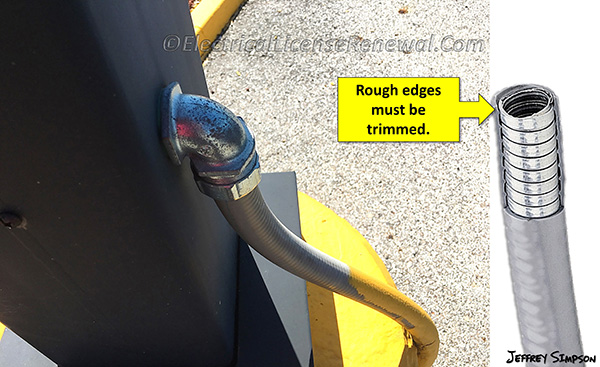350.28 Trimming.

Code Change Summary: New requirements were added for the proper trimming of Liquidtight Flexible Metal Conduit (Type LFMC).
Strangely enough, in the 2014 NEC®, requirements to trim and remove rough edges, after cutting a length of Liquidtight, were only stated in Article 356 for Liquidtight Flexible Nonmetallic Conduit (Type LFNC). These requirements were not mentioned when it came to metallic Liquidtight.
In the 2017 NEC®, language was added to put everyone on the right track. Now, when cutting LFMC, all cut ends of the conduit shall be trimmed inside and outside to remove rough edges.
This should provide the supporting code language for those who were already doing it even if the NEC® did not specifically require it.
Below is a preview of Article 350. See the actual NEC® text at NFPA.ORG for the complete code section. Once there, click on their link to free access to the 2017 NEC® edition of NFPA 70.
2017 Code Language:
N 350.28 Trimming. All cut ends of conduit shall be trimmed inside and outside to remove rough edges.